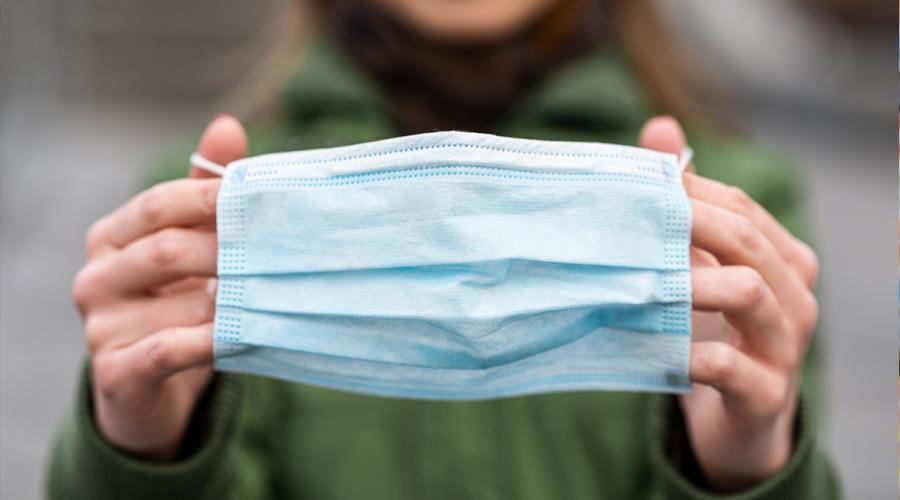
Response to Governor Cuomo’s Executive Order on Face Masks
Gov. Andrew Cuomo said on Sunday that he will order employers who are still open and interacting with the public to provide workers with some sort of face covering. A forthcoming executive order will direct “employers to provide essential workers with a cloth or surgical face mask to their employees when they are interacting with the public. And they should provide those masks cost-free.”
While the use of face masks is being promoted, it should be clearly noted that this is a stopgap measure in the face of the current shortage of N95 or higher (N99 or N100) disposable respirators which are the correct protection against inhalable viruses. Face masks are for aerosols and droplets which the wearer may be shedding and therefore protects others from you. So, if everybody is doing it, we all benefit. Moreover, other hazard reduction methods from the hierarchy of controls need to be used, in addition to face masks.
What will be the compliance date for providing the face masks? What is the penalty for noncompliance by the employer?
Under Section 5(b) of the OSHAct, the employer can enforce the wearing of personal protective equipment and the employee is required to comply with the employer’s safety and health requirements.
The employer should provide and pay for them.
Will they be disposable or reusable?
If disposable, how often will the employee be issued a new one? Will this be per-shift/day? Or, will they be expected to reuse them? (The issue of disposable versus reusable has been the subject of recent flexibility by the Centers for Disease Control in the face of N95 shortages. Reusable respirators with cartridges have been offered as an alternative.)
If reusable:
- Face masks should be made from 100 percent cotton fabric with four cotton fabric ties to go around the head and neck. Elastic, instead of ties, is discouraged as it will not tolerate repeated washings and especially not drying in a hot dryer. Elastic also contains latex rubber which can be an allergen for some people.
- How many masks will be provided to each employee? Will the employee be issued only one face mask? At least two would be desirable so that one can be in the laundry while the other is worn.
- Employer provides training and posters on proper donning and doffing. Wash hands after doffing your face mask.
- Training on the difference between a facemask and a respirator, so that employees know the limits of protection provided by a facemask. If one face mask is to be worn several days in a row, then, at the end of each day, the mask should be doffed and stored in a paper bag with the employee’s name on it and in a safe place such as a personal locker and not in a plastic bag as moisture from the face and breathing can allow bacteria and fungi to grow. Wash hands after donning it the next day.
How will the mask be maintained? Repaired? Laundered?
- By employer: washing and drying facilities at the worksite, as for other work clothing, if this is available
- By employee: If home laundering of work clothing is necessary, change clothes at work, place work clothes in a bag and leave them bagged until they are placed in the washing machine. Do not shake out clothing. Wash separately from other clothing, if desired; Centers for Disease Control indicates that this is not strictly necessary. Wash hands after handling the soiled clothing. Dry in the dryer.
How often will they be replaced as they wear out?
How will enforcement be done? I assume that this will have to be the state Department of Labor to carry out an executive order of the governor. Otherwise, the state has an OSHA-approved state plan which gives the state labor department oversight for enforcement of OSHA regulations for public sector workers only at the state, county and municipal levels.
The state labor department enforces its own health and safety regulations (such as Workplace Violence Prevention, Safe Patient Handling), but tends not to write its own regulations if OSHA already has regulations addressing the hazard. The OSHAct of 1970 gives employees the right to refuse hazardous work, especially in the case of “imminent danger” of loss of life or limb. But, making this case such that OSHA will support it may be problematic.
A similar situation occurred during the HIV/AIDS epidemic, a disease considered universally fatal when it first appeared. There were people who refused to work with HIV+ individuals, rent to them, hire or retain them, or embalm their bodies. Just like the current need for N95 respirators, HIV/AIDS led to a spike in demand for, and shortage of, disposable gloves. led to importation of poorly-polymerized latex gloves (as well as powdered gloves) that produced airborne latex dust and a lot of health care workers, as well as patients,having allergic reactions.
In the absence of either an OSHA standard or a New York state law on airborne disease, the fallback position is the general duty clause, Section 5(a) of the OSHAct of 1970, “Each employer - shall furnish to each of his employees employment and a place of employment which are free from recognized hazards that are causing or are likely to cause, death or serious physical harm to his employees; - it is unclear how this, in general, would be enforced by the state labor department in the private sector.
Determining whether COVID-19 is even a work-related disease for annual reporting to OSHA has undergone a recent re-interpretation by OSHA and will not be enforced in the private sector unless there is objective evidence that it may be work-related and that the evidence of that was reasonably available to the employer. OSHA indicates that its enforcement policy will help employers focus their response efforts on implementing good hygiene practices and otherwise mitigating COVID-19’s effects, rather than on making difficult work-relatedness decisions in circumstances where there is community transmission. https://www.osha.gov/memos/2020-04-10/enforcement-guidance-recording-cases-coronavirus-disease-2019-covid-19
Can an employee refuse to work if s/he does not get a mask? If a group of nonunion employees refuses to work without a mask for safety reasons, it is protected concerted activity under the NLRA section 8(a)1, assuming they work for a covered employer. The employee leader who organized the walkout is protected under the National Labor Relations Act, and, if discharged, is also a discriminatory discharge under 8(a)1. The discharged person(s) can ultimately receive reinstatement and back pay years later. This is an empty remedy, at the moment. If represented by a union, individuals need to contact their business agent as soon as possible. employees may refuse to work in dangerous situations, but it is much more limited. Unions may want to bargain with the employer about the type of mask-N95 or simple cloth or paper.
If the workplace does not have a health and safety committee, one needs to be established right away. Workers should be paid to participate, as well as able to shut down a task or workplace if adequate compliance with COVID-19 health and safety contractual agreements, or standards issued by OSHA or the state are not carried out by the employer. Empowering workers in the forefront of the crisis is essential - in the absence of actual union representation, worker safety committees can be mandated by our public officials to address the lack of actual resources for actual state oversight.

